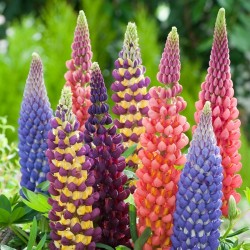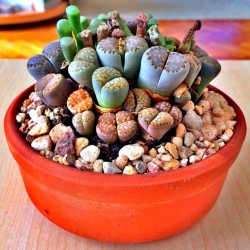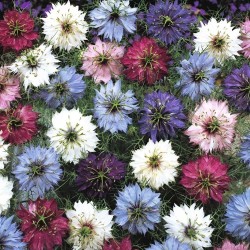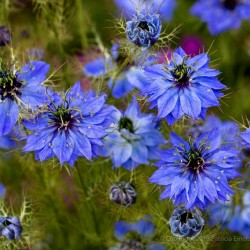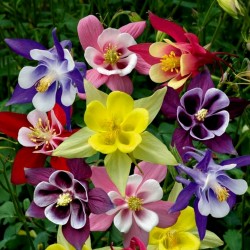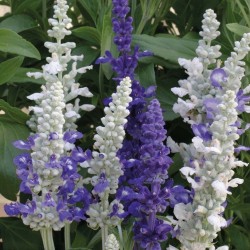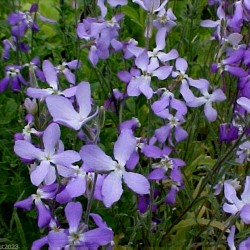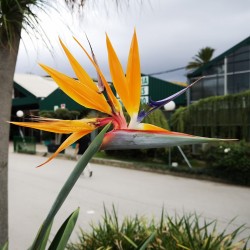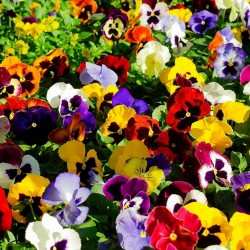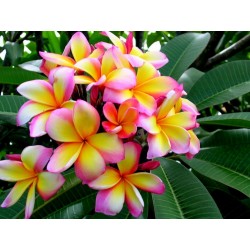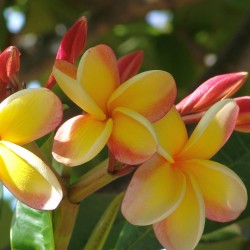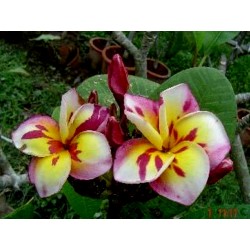Seeds Gallery Com,
5/
5
<!DOCTYPE html>
<html>
<head>
<meta http-equiv="Content-Type" content="text/html; charset=UTF-8" />
</head>
<body>
<h2><strong>Насіння Стрелітція королівська (Strelitzia reginae)</strong></h2>
<h2><span style="color: #ff0000;"><strong>Ціна за упаковку з 3 насінин.</strong></span></h2>
<p><b>Стрелі́тція</b><span> </span>(або<span> </span><b>стрелі́ція</b><sup id="cite_ref-Квітникарство_1-0" class="reference"></sup>)<span> </span><b>королі́вська</b><span> </span>(<i>Strelitzia reginae</i>)<sup id="cite_ref-The_Plant_List_2-0" class="reference"></sup> — отруйна<span> </span>багаторічна рослина<span> </span>родини<span> </span>стрелітцієвих, також відома під назвами<span> </span><b>ра́йська пта́шка</b>,<span> </span><b>журавли́на кві́тка</b>. Цінна<span> </span>декоративна культура<span> </span>відкритого та захищеного ґрунту.</p>
<h2><span class="mw-headline" id="Назва">Назва</span></h2>
<p>Епітет<span> </span>«королівська» слугує уточненням до родової назви «стрелітція», яка, в свою чергу, була надана рослині на честь англійської королеви<span> </span>Шарлотти — засновниці<span> </span>Королівських ботанічних садів в К'ю. Народні назви вказують на оригінальну форму квіток, що нагадує чубчик<span> </span>вінценосного журавля<span> </span>чи то пір'я<span> </span>райських птахів.</p>
<h2><span id=".D0.9E.D0.BF.D0.B8.D1.81"></span><span class="mw-headline" id="Опис">Опис</span></h2>
<div class="thumb tright">
<div class="thumbinner"><img alt="Насіння Стрелітція королівська (Strelitzia reginae)" src="https://upload.wikimedia.org/wikipedia/commons/thumb/8/81/Strelitzia_reginae5.jpg/220px-Strelitzia_reginae5.jpg" decoding="async" width="220" height="165" class="thumbimage" srcset="//upload.wikimedia.org/wikipedia/commons/thumb/8/81/Strelitzia_reginae5.jpg/330px-Strelitzia_reginae5.jpg 1.5x, //upload.wikimedia.org/wikipedia/commons/thumb/8/81/Strelitzia_reginae5.jpg/440px-Strelitzia_reginae5.jpg 2x" data-file-width="2816" data-file-height="2112" title="Насіння Стрелітція королівська (Strelitzia reginae)" />
<div class="thumbcaption">
<div class="magnify"></div>
Загальний вигляд неквітучих рослин</div>
</div>
</div>
<div class="thumb tright">
<div class="thumbinner"><img alt="Насіння Стрелітція королівська (Strelitzia reginae)" src="https://upload.wikimedia.org/wikipedia/commons/thumb/1/1c/Strelitzia_larger.jpg/220px-Strelitzia_larger.jpg" decoding="async" width="220" height="152" class="thumbimage" srcset="//upload.wikimedia.org/wikipedia/commons/thumb/1/1c/Strelitzia_larger.jpg/330px-Strelitzia_larger.jpg 1.5x, //upload.wikimedia.org/wikipedia/commons/thumb/1/1c/Strelitzia_larger.jpg/440px-Strelitzia_larger.jpg 2x" data-file-width="2700" data-file-height="1868" title="Насіння Стрелітція королівська (Strelitzia reginae)" />
<div class="thumbcaption">
<div class="magnify"></div>
Суцвіття з двох квіток</div>
</div>
</div>
<div class="thumb tright">
<div class="thumbinner"><img alt="Насіння Стрелітція королівська (Strelitzia reginae)" src="https://upload.wikimedia.org/wikipedia/commons/thumb/f/fa/Strelitzia_reginae_MHNT.BOT.2009.13.52.jpg/220px-Strelitzia_reginae_MHNT.BOT.2009.13.52.jpg" decoding="async" width="220" height="185" class="thumbimage" srcset="//upload.wikimedia.org/wikipedia/commons/thumb/f/fa/Strelitzia_reginae_MHNT.BOT.2009.13.52.jpg/330px-Strelitzia_reginae_MHNT.BOT.2009.13.52.jpg 1.5x, //upload.wikimedia.org/wikipedia/commons/thumb/f/fa/Strelitzia_reginae_MHNT.BOT.2009.13.52.jpg/440px-Strelitzia_reginae_MHNT.BOT.2009.13.52.jpg 2x" data-file-width="3769" data-file-height="3166" title="Насіння Стрелітція королівська (Strelitzia reginae)" />
<div class="thumbcaption">
<div class="magnify"></div>
Плоди з насінням</div>
</div>
</div>
<div class="thumb tright">
<div class="thumbinner"><img alt="Насіння Стрелітція королівська (Strelitzia reginae)" src="https://upload.wikimedia.org/wikipedia/commons/thumb/7/74/Paradiesvogelblumensamen.jpg/220px-Paradiesvogelblumensamen.jpg" decoding="async" width="220" height="188" class="thumbimage" srcset="//upload.wikimedia.org/wikipedia/commons/thumb/7/74/Paradiesvogelblumensamen.jpg/330px-Paradiesvogelblumensamen.jpg 1.5x, //upload.wikimedia.org/wikipedia/commons/7/74/Paradiesvogelblumensamen.jpg 2x" data-file-width="402" data-file-height="344" title="Насіння Стрелітція королівська (Strelitzia reginae)" />
<div class="thumbcaption">
<div class="magnify"></div>
Насінини великим планом</div>
</div>
</div>
<div class="thumb tright">
<div class="thumbinner"><img alt="Насіння Стрелітція королівська (Strelitzia reginae)" src="https://upload.wikimedia.org/wikipedia/commons/thumb/1/19/Strelitzia_reginae0.jpg/220px-Strelitzia_reginae0.jpg" decoding="async" width="220" height="165" class="thumbimage" srcset="//upload.wikimedia.org/wikipedia/commons/thumb/1/19/Strelitzia_reginae0.jpg/330px-Strelitzia_reginae0.jpg 1.5x, //upload.wikimedia.org/wikipedia/commons/thumb/1/19/Strelitzia_reginae0.jpg/440px-Strelitzia_reginae0.jpg 2x" data-file-width="640" data-file-height="480" title="Насіння Стрелітція королівська (Strelitzia reginae)" />
<div class="thumbcaption">
<div class="magnify"></div>
Стрелітція королівська форма цитринова</div>
</div>
</div>
<p>Вічнозелена<span> </span>трав'яниста рослина<span> </span>заввишки 1-2 м. Кореневище коротке, розгалужене; корені соковиті, ламкі, завтовшки до 7 мм. Листки з черешками завдовжки 50-100 см, завширшки до 1 см, розташованими в два ряди так, що їх сукупність нагадує віяло. Їх основи розширюються у невеликі<span> </span>піхви<span> </span>і формують несправжнє стебло. Воно пряме, голе, вкорочене, міцне, трохи сплюснуте.<span> </span>Листкова пластинка<span> </span>гола, жорстка, шкіряста, довгасто-ланцетна, сизувато-зелена, завдовжки 25-70 см, завширшки 10-40 см.<span> </span>Жилкування<span> </span>пірчасте, жилки рельєфні, причому центральна білувата або червонувата жилка зверху виглядає дещо вдавленою, а знизу помітно виступає над поверхнею листкової пластинки.</p>
<p>квітконоси<span> </span>міцні, довгі, дещо підіймаються над листям. В залежності від віку рослини їх може бути від 6 до 35 штук.<span> </span>Приквіток<span> </span>цупкий, пурпурово-червонуватий, завдовжки 12-25 см, під час цвітіння розташований горизонтально і перпендикулярно до осі квітконоса. Суцвіття — видозмінений малоквітковий<span> </span>завиток. Квіти великі (10-15 см завширшки), сидячі, двостатеві,<span> </span>зигоморфні, без запаху.<span> </span>Оцвітина<span> </span>тричленна, дворядна.<span> </span>Чашолистки<span> </span>довгасто-яйцеподібні, помаранчеві, вільні. Пелюстки сині, з них дві зростаються разом на кшталт стріли й охоплюють пружний<span> </span>стовпчик<span> </span>і 5 тичинок. Плід — тригнізда розкривна<span> </span>коробочка, що містить від 6 до 80 насінин. Насінини завширшки до 0,7 см, сидячі, кулясті, гладенькі, лискучі, чорні, з<span> </span>принасінником<span> </span>у вигляді густого помаранчевого опушення з одного боку.</p>
<p>Листя, квіти та насіння стрелітції королівської мають слабкі отруйні властивості.</p>
<h2><span id=".D0.95.D0.BA.D0.BE.D0.BB.D0.BE.D0.B3.D1.96.D1.8F"></span><span class="mw-headline" id="Екологія">Екологія</span></h2>
<p>Світло-, тепло- та помірно вологолюбний вид. В природі зростає по берегах річок, на узліссях та вирубках, віддає перевагу нейтральним, глинисто-дерновим ґрунтам з домішками піску, торфу, перегною. Добре розвивається на освітлених місцях, але прямі сонячні промені влітку можуть завдати шкоди. Рослини гинуть при температурі вище 45 °C та нижче −2…-5°C, хоча ушкоджень зазнають вже при температурі нижче 10 °C. Оптимальною для вирощування в культурі є зимова температура 12-15 °C при вологості повітря 60-65% і літня 20-25 °C при вологості повітря 80-85%.<sup id="cite_ref-Квітникарство_1-1" class="reference">[1]</sup></p>
<p>Період цвітіння триває з осені до ранньої весни, зазвичай з двома піками в жовтні-листопаді та в лютому-березні. Від появи квітконоса до розкриття першої квітки проходить два місяці. Квітки у суцвітті розквітають з інтервалом в 3-4 дні. Цвітіння кожної з них триває 10-12 днів, а суцвіття загалом зберігає декоративність протягом 3-5 тижнів.<span> </span>Запилення<span> </span>в природі відбувається за допомогою<span> </span>нектарниць, які сідають на приквіток, щоб поласувати нектаром, а в цей час<span> </span>пиляки<span> </span>вистрелюють в них пилком. В культурі застосовують штучне запилення пензликом, яке найбільш ефективне на другий день після розкриття квітки.</p>
<p>Плодоношення затримує бутонізацію і зменшує кількість суцвіть під час наступного цвітіння. Насіння дозріває через 175–185 днів після запилення. Свіже насіння проростає через 25-30 діб, насіння, що зберігалося протягом місяця, — через 40-45 діб, насіння, що зберігалося до півроку, може прорости через 6-12 місяців після посіву, насіння, що зберігалося понад півроку втрачає схожість. Розвиток сіянців відбувається повільно, наприклад, перший листок розгортається через 20-25 днів, другий з'являється лише через 4-5 місяців.<sup id="cite_ref-Квітникарство_1-2" class="reference">[1]</sup><span> </span>В подальшому розвиток рослини дещо прискорюється, але перше цвітіння настає лише у віці 5-6 років.</p>
<p>Окрім насіннєвого можливе вегетативне розмноження поділом куща, але після нього розвиток дочірніх рослин дещо уповільнюється, тому повного розвитку вони досягають лише через 2 роки.</p>
<h2><span id=".D0.9F.D0.BE.D1.88.D0.B8.D1.80.D0.B5.D0.BD.D0.BD.D1.8F"></span><span class="mw-headline" id="Поширення">Поширення</span></h2>
<p>Первинний<span> </span>ареал<span> </span>стрелітції королівської охоплював терени<span> </span>Південної Африки. Наразі як популярна декоративна культура ця рослина акліматизована практично в усіх тропічних та субтропічних районах, як от: в<span> </span>Австралії,<span> </span>Мексиці,<span> </span>Белізі,<span> </span>Гаяні,<span> </span>Бангладеш, на островах<span> </span>Мадейра,<span> </span>Мартиніка,<span> </span>Гаїті, архіпелазі<span> </span>Хуан-Фернандес, у штатах<span> </span>Флорида<span> </span>та<span> </span>Каліфорнія<span> </span>(США). Певним чином можна сказати, що стрелітція королівська поширена і в помірному поясі, де її часто вирощують в захищеному ґрунті.</p>
<h2><span id=".D0.97.D0.B0.D1.81.D1.82.D0.BE.D1.81.D1.83.D0.B2.D0.B0.D0.BD.D0.BD.D1.8F"></span><span class="mw-headline" id="Застосування">Застосування</span></h2>
<p>Завдяки привабливим квітам і тривалому періоду цвітіння стрелітція королівська набула значної популярності серед садівників. В культурі вона відома з XVIII століття. В регіонах з теплим кліматом її можна часто побачити не тільки в садах і квітниках, але і на узбіччях доріг, посеред вуличних газонів. В<span> </span>Лос-Анджелесі<span> </span>цей вид став настільки поширеним, що був офіційно визнаний «квіткою міста». В помірних регіонах планети стрелітцію королівську можна побачити в оранжереях ботанічних садів. Крім того, її вирощують в кімнатах, а також використовують як чудовий матеріал для складання букетів.</p>
<p>Найбільш відомі сорти 'Mandela's Gold' з жовтими квітами, названий на честь<span> </span>Нельсона Мандели, та 'Humilis' (він же 'Pygmaea') заввишки лише 80 см, з якого утворюють щільні групи на газонах.</p>
<h3><span id=".D0.92.D0.B8.D1.80.D0.BE.D1.89.D1.83.D0.B2.D0.B0.D0.BD.D0.BD.D1.8F"></span><span class="mw-headline" id="Вирощування">Вирощування</span></h3>
<p>Найкращий час для посіву насіння — рання весна. Посів здійснюють на глибину 2-2,5 см у пухку, поживну суміш з рівних частин землі, торфу і піску. Оптимальна температура для проростання насіння — 20-25 °C. Після появи другого листка рослини обережно пересаджують у більший горщик, протягом перших 2-3 років утримують за постійної температури 18-20 °C. Після досягнення трирічного віку до саджанців застосовують зимове пониження температури до 12-14 °C. Рослини поливають помірно, а під час появи пуп'янків та квіток — рясно. Під час цвітіння не підживлюють, в період відносного спокою підживлюють щодекади повним мінеральним добривом і 0,05% розчином<span> </span>борної кислоти<span> </span>(10 г/м³ ґрунту).<sup id="cite_ref-Квітникарство_1-3" class="reference">[1]</sup><span> </span>Стрелітція королівська добре реагує на обприскування теплою водою, влітку її бажано виносити на свіже повітря у напівзатінок.</p>
<p>Для вегетативного розмноження використовують особини у віці не менше 7 років. Загалом ці рослини зберігають високу декоративність до 10-12 років.</p>
<h2>Sowing: </h2>
<p>Sow indoors at any time of year.</p>
<p>Before sowing, remove the bright orange tuft of hairs attached to the seed (aril of each seed), the hard seeds can be scarified (nicked or scratched) to decrease germinate. To scarify, soak the seeds in lukewarm water for several hours, and then nick them with a knife or small file. Scarified seeds will germinate in two to three months.</p>
<p>Another way to decrease germination time is to put un-scarified seeds in a plastic bag and place them in a refrigerator at 4°C (40°F) for two weeks. Then scarify and sow them.</p>
<p>Sow in seed trays filled with a well-drained soil medium at a depth of 1.25cm (½”)</p>
<p>Keep at a constant temperature of 25°C (77°F) low temperatures retard germination. Germination takes four to eight weeks.</p>
<p>The soil mix must be kept consistently damp until the seeds germinate. To ensure a moist, humid environment, cover the seed container with a sheet of glass or clear plastic and place it in indirect light.</p>
<p>Seedlings should be a good size before transplanted (two to three leaves) into a well-drained medium. Young strelitzia plants must be grown in shade, for the leaves tend to burn in direct sunlight. Regular repotting allows the young plant to develop rapidly. Restricting the root development of retards growth.</p>
<h3>Cultivation: </h3>
<p>Strelitzia nicolai is an easy plant to grow in the garden. Plants do well in full sun to semi-shade, love rich loamy soil and plenty of water throughout the year. They respond well to regular feeding with a slow-release fertilizer and compost. They are very tolerant plants and will thrive in most soils and can survive with very little water once established. They are also wind resistant and grow well in coastal gardens.</p>
<p>Strelitzias are sensitive to cold and in areas with frosts would need a sheltered position. In cold climates, it is better to grow them in pots that could be moved indoors when frosts are expected. As soon as the frosts finish for the winter, you may place the plant outside in a sheltered south-facing the garden. They tend to do well when temperatures do not drop below 10°C (50°F) and do very well in a greenhouse/conservatory.</p>
<h3>Tips for growing strelitzia in a temperate climate: </h3>
<p>Overwintering - One of the main points with exotic plants is to avoid frost. Keep in a warm, well-lit area. Stop feeding the plants to allow them to become dormant. Do not overwater in the dormant season/winter. Wet soil is cold soil.</p>
<p>Springtime: - Feed the plant well once growth starts again. Feed regularly throughout the growing season but do not over-feed otherwise your plants will just grow foliage and no flowers.</p>
<h3>Flowering: </h3>
<p>From seed, plants given ideal conditions will flower within 3 years. To get a mature flowering plant from seed takes about three to five years.</p>
<p>They usually start to come into flower at Christmas time and sometimes later in the summer months. The flower spikes take a few months to grow full size, but then open gradually, taking a few weeks, to a few months to open up to reveal their famous flowers</p>
<h3>Watering: </h3>
<p>The bird of paradise plant should be watered thoroughly but then allowed to dry out almost completely before re-watering. They don’t like to be over-watered, and in the rest period (winter) they should only be watered when the soil is almost completely bone dry. When growing begins in the Spring they should be given phostrogen feed once every two weeks, to encourage new growth.</p>
<h3>Feeding: </h3>
<p>During the summer months, Strelitzia requires as much sunlight and ventilation as possible. Feed once a week with a phostrogen feed to help encourage new leaves and flower spikes.</p>
<h3>Potting: </h3>
<p>As soon as the roots start to stretch the pot wider, it would then be wise to pot the plant up into the next size pot. They tend to do very well in a loam-based compost with either grit or bark chippings to aid drainage. The optimum pH is 6.5.</p>
</body>
</html>
F 1




